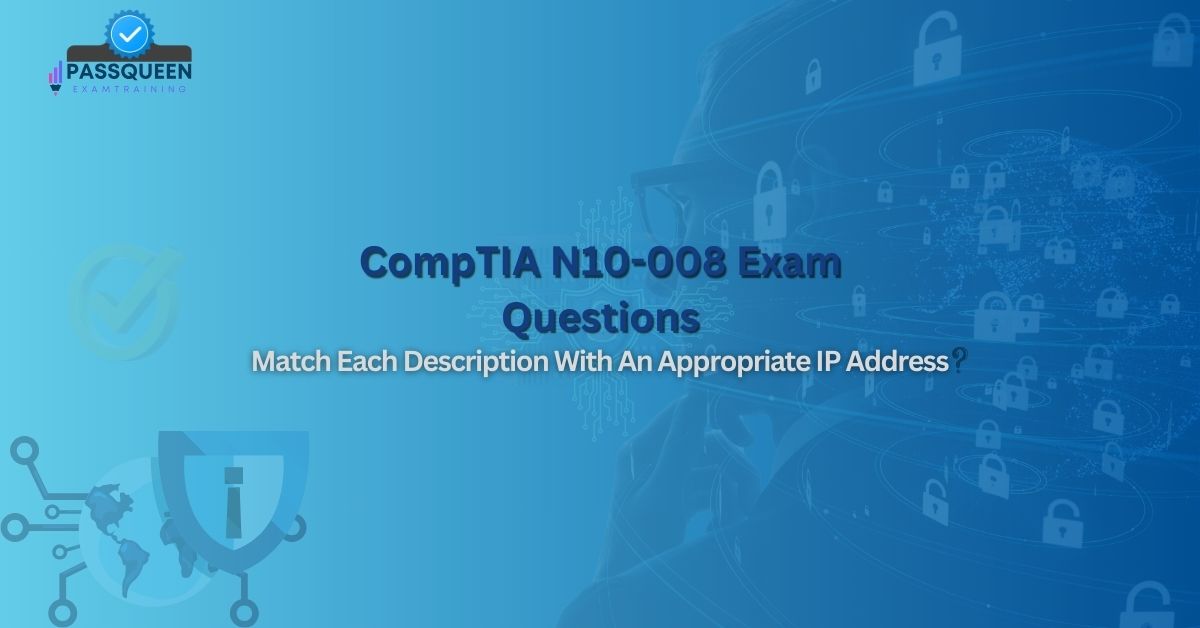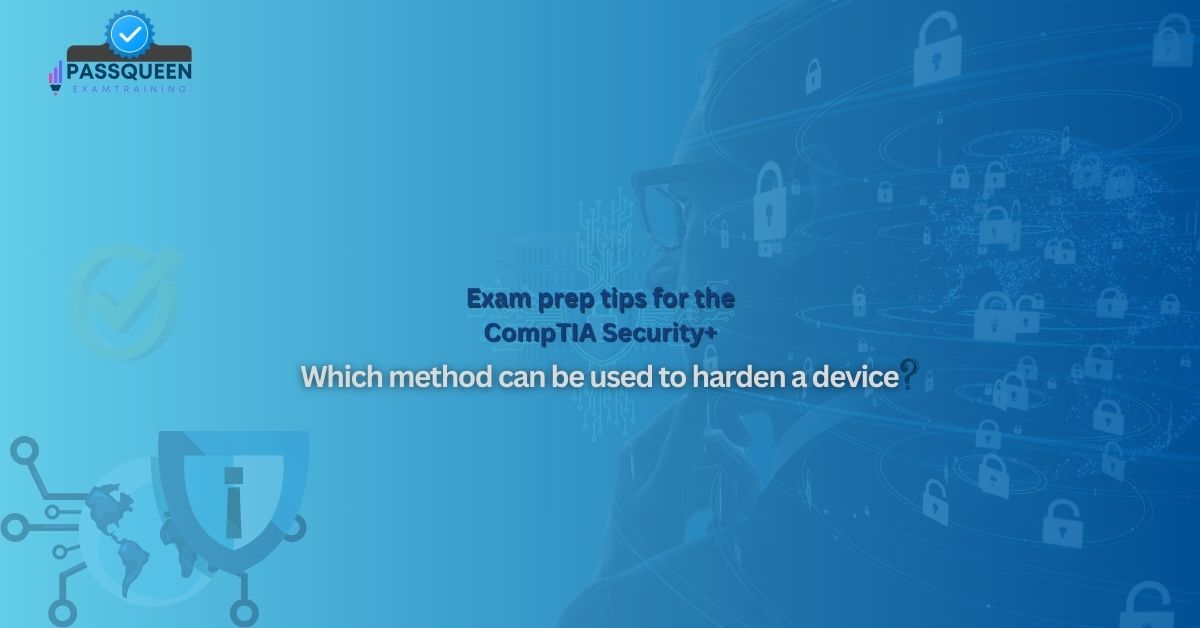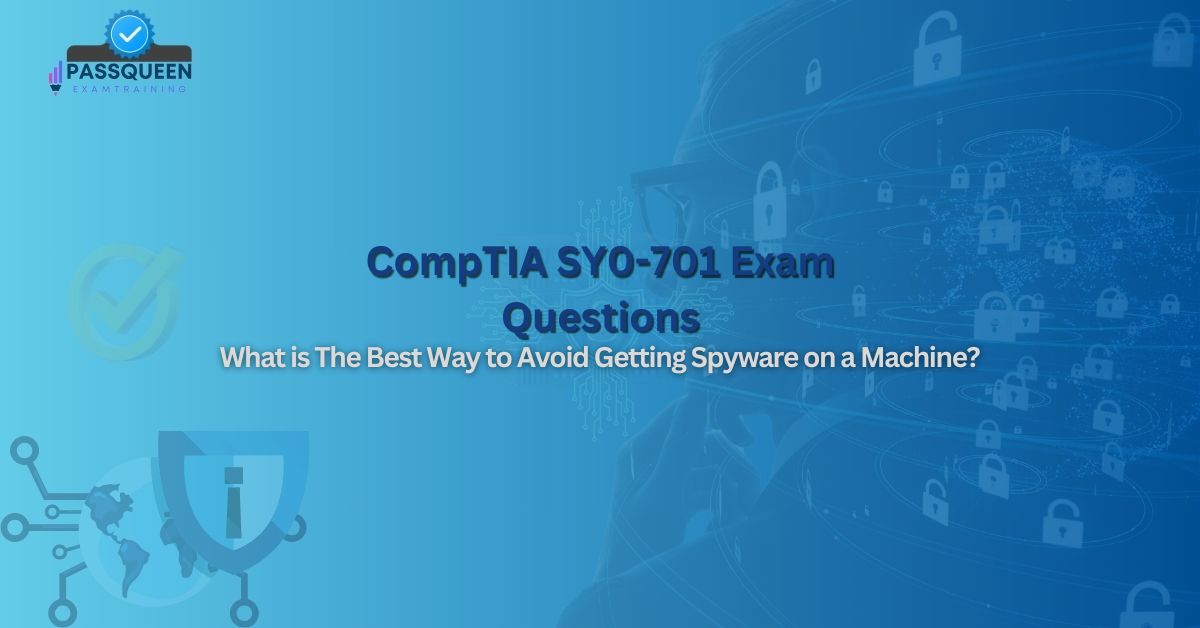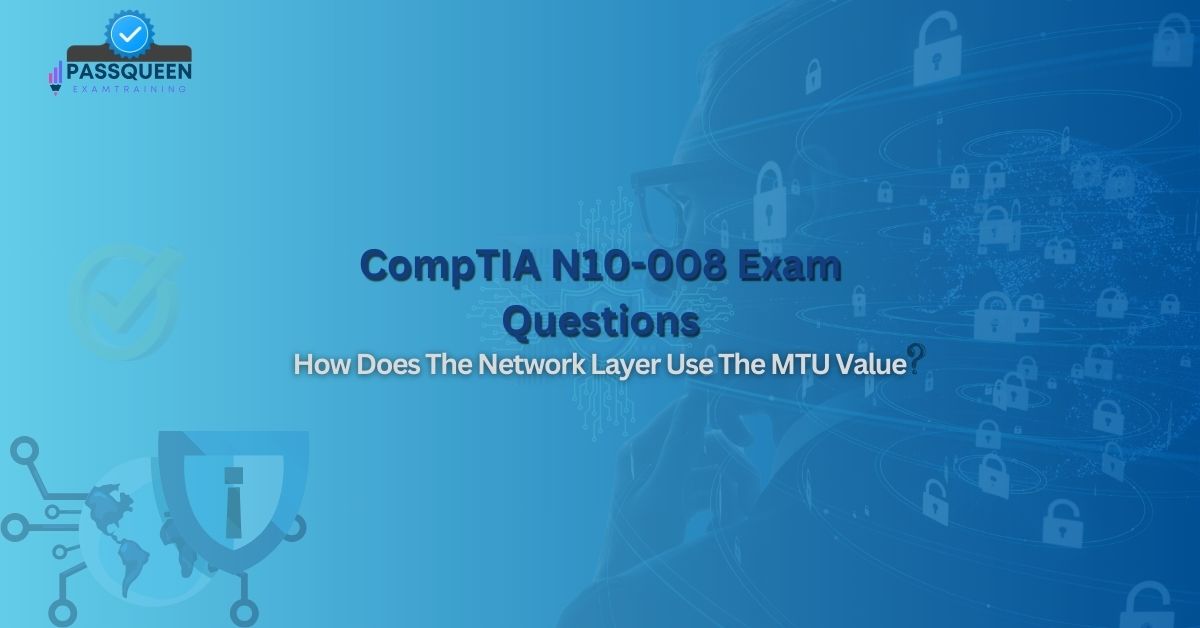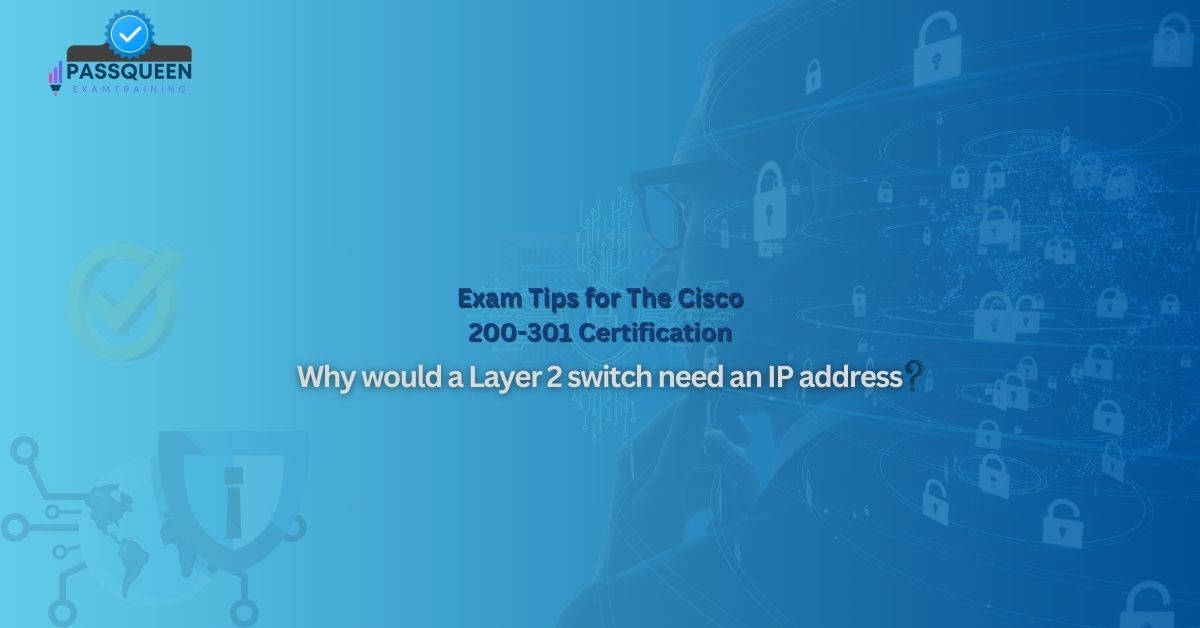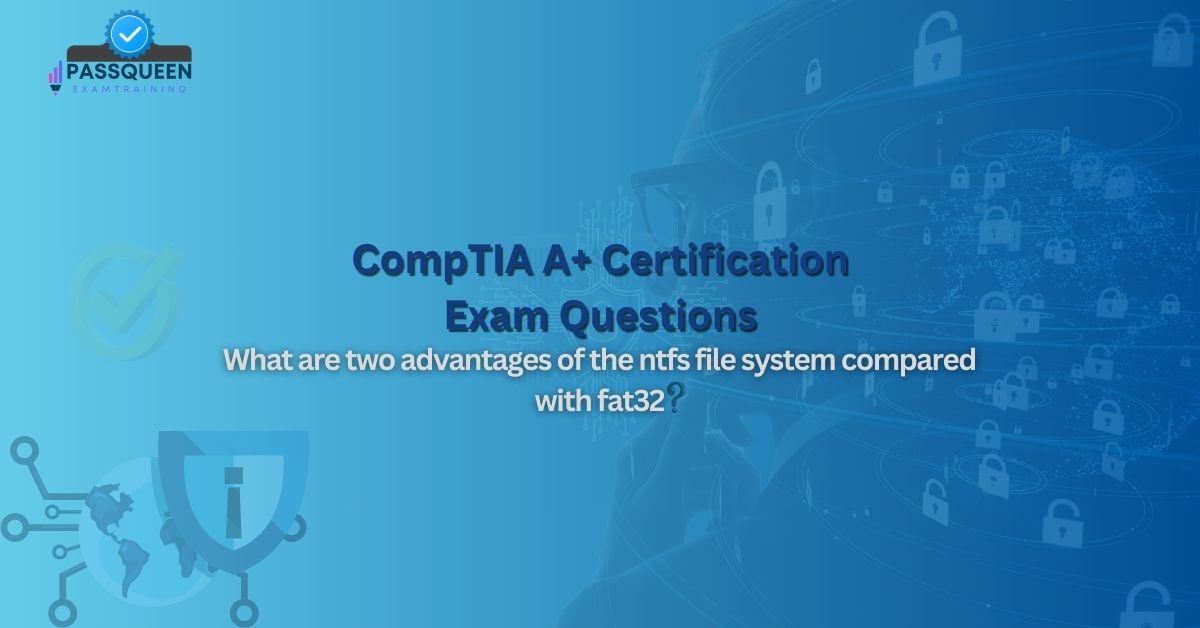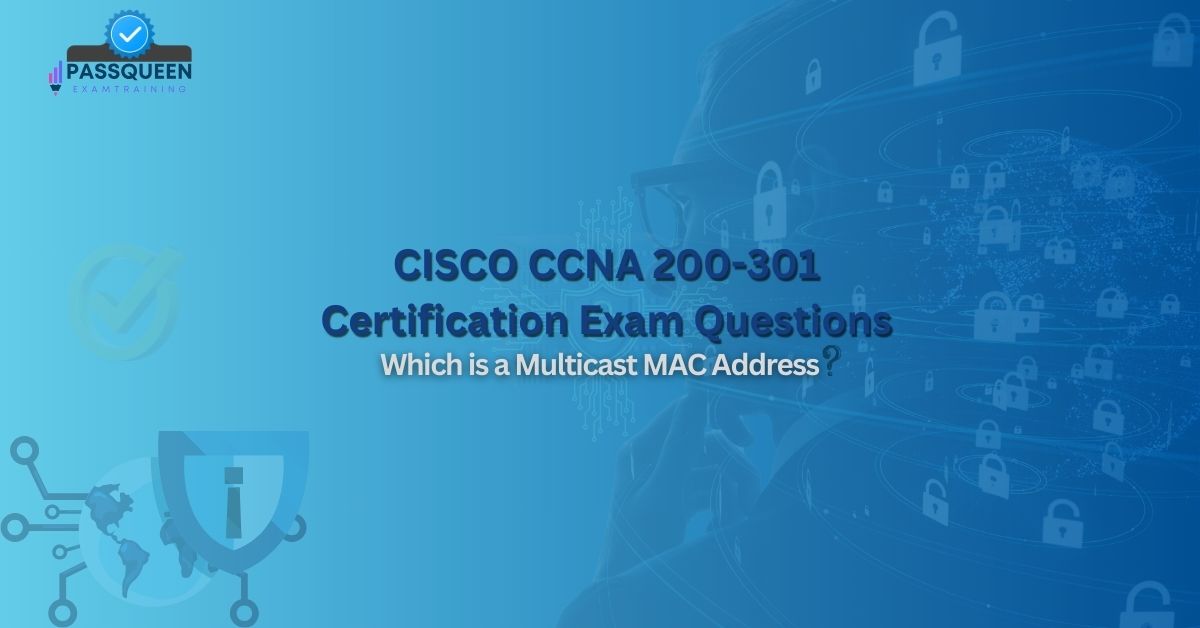Introduction
In the intricate tapestry of networking, IP addressing stands as a fundamental thread, weaving together the ability of devices to communicate across local and global networks. For those pursuing the CompTIA Network+ certification through the N10-008 exam, understanding IP address types and their applications is a critical skill that underpins both theoretical knowledge and practical expertise. This article provides an overview of IP addressing, details common IP address types, and explores their relevance to the CompTIA N10-008 Exam Questions.
The N10-008 exam demands proficiency in identifying and matching IP address types to their purposes, a task that appears in various question formats. PassQueen, with its expertly designed study resources, aligns perfectly with CompTIA’s objectives, offering the clarity, practice, and confidence needed to ace the exam and thrive in real-world networking scenarios.
Overview of IP Addressing
An IP address is a unique identifier assigned to each device on a network, enabling it to send and receive data. In the IPv4 system—the focus of N10-008—this 32-bit address is expressed in dotted-decimal notation (e.g., 192.168.1.10), divided into a network portion (identifying the network) and a host portion (identifying the device). IP addressing operates at the Network Layer (Layer 3) of the OSI model, facilitating routing and communication across diverse networks.
IP addresses come in various types, each serving a distinct purpose—public addresses for internet connectivity, private addresses for internal networks, and special-purpose addresses like loopback or broadcast. Understanding these types is foundational to network configuration, troubleshooting, and optimization, making it a cornerstone of the N10-008 curriculum.
Common IP Address Types and Descriptions
Here are the most common IP address types tested in N10-008, along with their descriptions:
- Public IP Address: Assigned by an Internet Service Provider (ISP) or the Internet Assigned Numbers Authority (IANA), these addresses (e.g., 203.0.113.10) are globally unique and routable on the public internet, used for devices like web servers or routers.
- Private IP Address: Defined by RFC 1918, these addresses (e.g., 192.168.1.10, 10.0.0.5, 172.16.2.100) are reserved for internal networks, not routable on the public internet, and commonly used in homes or businesses behind NAT (Network Address Translation).
- Loopback IP Address: Typically 127.0.0.1, this address is used to test a device’s network stack, allowing it to communicate with itself without external connectivity.
- Broadcast IP Address: The last address in a subnet (e.g., 192.168.1.255 in a /24 network), used to send data to all devices within that subnet.
- Network IP Address: The first address in a subnet (e.g., 192.168.1.0 in a /24 network), reserved to identify the network itself, not assignable to hosts.
These types are integral to network operations and frequently appear in N10-008 questions.
Exam-Style Matching Exercise
To mirror N10-008’s format, here’s a matching exercise:
- Descriptions:
A. Used to test local network functionality on a device
B. Assigned to a web server accessible from the internet
C. Reserved for a small office LAN behind a router
D. Identifies the entire subnet, not a specific device
E. Sends a message to all devices in the subnet - IP Addresses:
- 127.0.0.1
- 203.0.113.10
- 192.168.1.10
- 192.168.1.0
- 192.168.1.255
- Answers:
A-1 (Loopback), B-2 (Public), C-3 (Private), D-4 (Network), E-5 (Broadcast)
This exercise tests recognition of IP address roles.
Application to N10-008 Exam Training
The N10-008 exam integrates IP addressing across its domains, from network architecture to troubleshooting. Matching exercises like the one above appear in multiple-choice or drag-and-drop formats, asking candidates to pair IP types with descriptions or scenarios. For example, “Match 172.16.1.100 to its purpose” might list options like “internet-facing server” or “internal device.”
Performance-based tasks might require configuring a network with appropriate IP types—assigning private addresses to LAN devices and a public address to a router’s WAN interface. Troubleshooting questions could involve identifying a misconfigured broadcast address causing network floods.
Practical Tips for Matching IP Addresses
Matching IP addresses to their purposes requires precision. Here are practical tips:
- Memorize Ranges: Know private ranges (10.0.0.0–10.255.255.255, 172.16.0.0–172.31.255.255, 192.168.0.0–192.168.255.255) vs. public ranges.
- Spot Special Addresses: Recognize 127.0.0.1 as loopback and subnet-specific network/broadcast addresses (e.g., .0 and .255 in /24).
- Context Clues: In scenarios, “internet-accessible” suggests public, while “LAN-only” points to private.
- Subnet Awareness: Understand how subnet masks affect network and broadcast addresses.
- Practice Matching: Regularly pair IPs with roles.
These tips ensure exam readiness and practical proficiency.
Study Tips for N10-008 - CompTIA Network+ Exam
Mastering IP addressing for N10-008 requires a strategic approach:
- Learn Basics: Start with IP structure and types.
- Memorize Key Addresses: Drill private ranges, loopback, and subnet patterns.
- Practice Matching: Tackle exam-style exercises.
- Visualize Networks: Study diagrams showing public vs. private setups.
- Simulate Scenarios: Use Packet Tracer to assign IP types.
- Troubleshooting Focus: Analyze IP misconfigurations.
PassQueen’s comprehensive resources—study guides, practice exams, and interactive content—ensure learners are fully prepared for N10-008’s IP addressing challenges.
Conclusion
IP addressing is the heartbeat of networking, with its various types—public, private, loopback, broadcast, and network—defining how devices connect and communicate. For the N10-008 exam, mastering these distinctions is a testable skill with real-world impact, from configuring networks to resolving issues. PassQueen transforms this complexity into an opportunity for success.
With its tailored, high-quality resources, PassQueen equips N10-008 candidates to match IP addresses confidently and apply this knowledge practically. As you prepare for the CompTIA Network+ exam, let PassQueen be your guide—your certification and networking expertise are within reach.
Sample Questions for CompTIA N10-008 - CompTIA Network+ Exam Prep
Match Each Description with An Appropriate IP Address
Descriptions:
A. Used to test local network functionality on a device
B. Assigned to a web server accessible from the internet
C. Reserved for a small office LAN behind a router
D. Identifies the entire subnet, not a specific device
E. Sends a message to all devices in the subnet
IP Addresses:
- 127.0.0.1
- 203.0.113.10
- 192.168.1.10
- 192.168.1.0
- 192.168.1.255
Correct Answers:
A-1, B-2, C-3, D-4, E-5
Explanation:
- 127.0.0.1 (loopback) tests local functionality.
- 203.0.113.10 (public) suits an internet-facing server.
- 192.168.1.10 (private) fits a LAN device.
- 192.168.1.0 (network) identifies a subnet.
- 192.168.1.255 (broadcast) targets all subnet devices.

